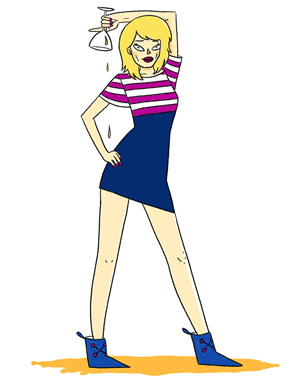No, not flat Champagne, but Coteaux Champenois, the still wine of the region. Not familiar with this? You will not be alone for production dwindled in the C20th. It was simply too difficult to ripen Pinot Noir and Chardonnay to make a regular wine, whereas the edgy acidity was perfect for making Champagne. The reversal of fortune came around 1850 when sparkling production outstripped still. Never-the-less Champagne houses continued to produce still wine long after this and Louis Roederer was among those to commercialise a pre-war Coteaux Champenois.
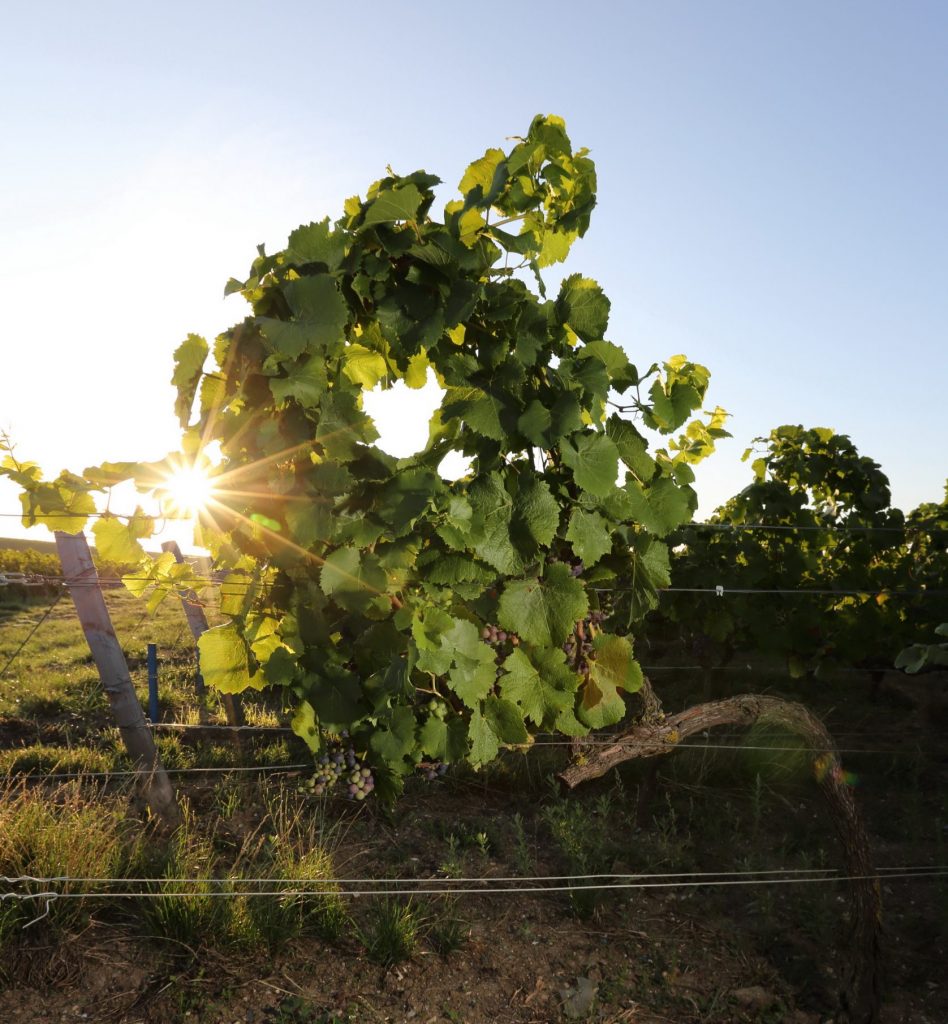
No, not flat Champagne, but Coteaux Champenois, the still wine of the region. Not familiar with this? You will not be alone for production dwindled in the C20th. It was simply too difficult to ripen Pinot Noir and Chardonnay to make a regular wine, whereas the edgy acidity was perfect for making Champagne. The reversal of fortune came around 1850 when sparkling production outstripped still. Never-the-less Champagne houses continued to produce still wine long after this and Louis Roederer was among those to commercialise a pre-war Coteaux Champenois.
Recently there has been a light bubbling of interest in the style with some of the high profile producers releasing a Coteaux Champaneois including Bollinger (La Côte aux Enfants) and Egly-Ouriet (Ambonnay Rouge) together with a host of smaller producers. At Louis Roederer, cellar master Jean-Baptiste Lécaillon draws a parallel with the trend for grower Champagne and single vineyard Champagne. Climate change has greatly improved ripeness, which has diminished the dependance on blending – not only blending grapes from numerous parcels, some riper than others, but blending vintages for consistency in the non-vintage Champagne. In the past growers had little choice but to sell to a Champagne house, whereas warmer summers have enabled them to make their own Champagne, including Champagne from a single vineyard and vintage.
This blog focuses on Roederer’s Coteaux Champenois ‘Homage à Camille,’ a red and white cuvée, the second vintage of which has just been released. They are named in honour of Camille Olry-Roederer who captained the company from 1932-75. She continued to produce small quantities of Coteaux Champenois for her own pleasure, with which she liked to surprise her dinner guests.
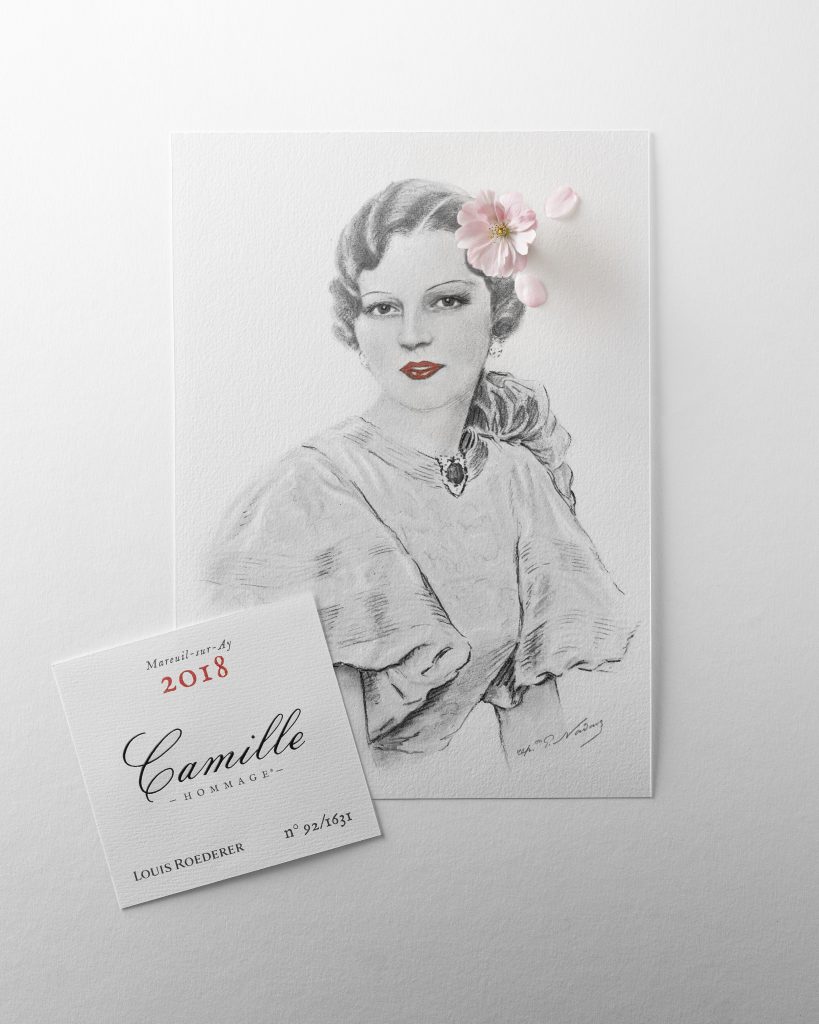
Lécaillon explains that the concept of the resurrected Coteaux Champenois – now a commercial project – “to express terroir through a single vineyard and a single variety”.
The origins of Roederer’s project go back to the late ‘90s when Lécaillon began extensive research to understand the terroir of their many parcels, as part of their conversion to organic and biodynamic management. Both the soil and the root profile were studied and in the process he discovered five to six parcels with a high percentage of clay. “It’s the opposite of chalk, which is our DNA in Champagne,” remarks Lécaillon, but the clay parcels were promising for Pinot Noir, “to give the body, depth and structure.” (The appellation allows red, white and rosé, but in practice Coteaux Champenois is largely red.)
Roederer focused on the lieut-dit of Charmont in the cru of Mareuil-Sur-Ay. The slope is full south facing. It has white clay in the middle third of the slope, top soil which has slipped down with erosion, leaving the highest third very chalky. The existing vines were removed from the mid section, which was left fallow for a couple of years, before replanting it in 2002 with a massale selection from Alsace and Burgundy.
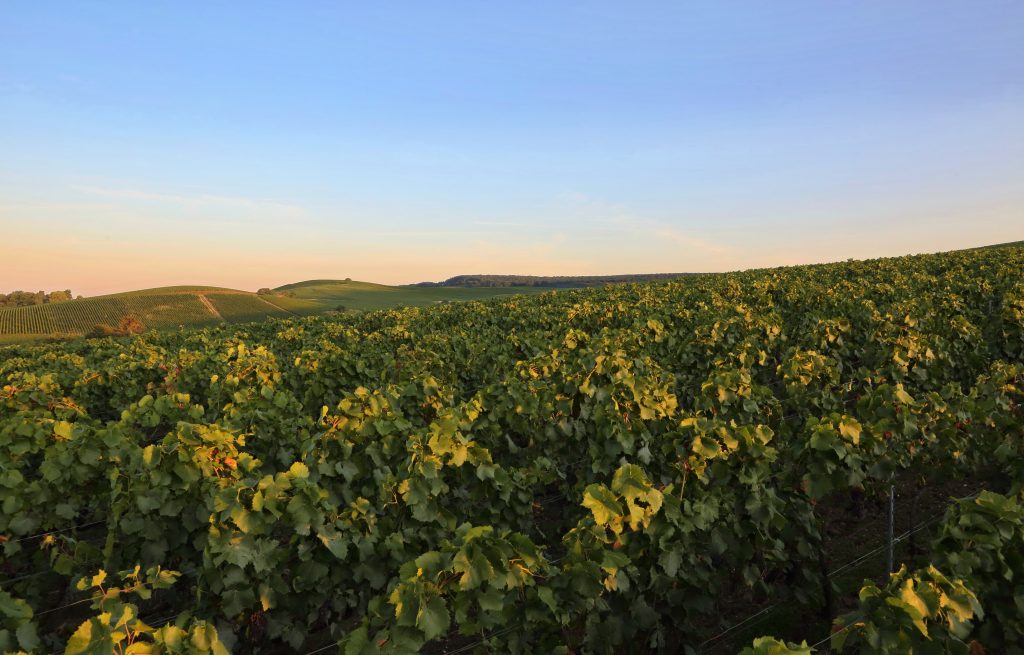
Parcelle de vigne Les Charmonts a Ay du Champagne Louis Roederer
It is necessary to manage the vineyard with a taller and more open canopy to maximise the sunshine, which is quite the opposite of Champagne practice to shelter the grapes with foliage to retain the acidity. In the winery the approach has to be very different too. “We don’t want phenolics for Champagne, so we have a very soft press and minimal skin contact,” but with still wine we want extended time on the skin, as the skin, pips and stalks bring with them the expression of terroir.”
Lécaillon and his team have clearly enjoyed experimenting with the winemaking process, although he confesses that not all has gone to plan. In 2014 they harvested too late “I had the wrong idea. I thought we should pick two weeks after Champagne.” In 2015, a ripe year, he concentrated on phenolic ripeness, which was achieved around the same time as the Champagne harvest, and he de-stemmed the bunches. He felt the wines were much better, very fruity, but too easy and crowd pleasing. In 2016 the stems were removed, passed along the sorting table and tasted to re-introduce the best. 2017 was bypassed as the vineyards were affected by botrytis.
And now to 2018, the first vintage to be commercialised. Lécaillon used 40% whole bunch. No tasting the stems this year. He is keen to retain the whole berry for the intracellular fermentation. It is fermented in small vat with the grapes pushed down gently by hand. Twenty percent is subsequently aged in terracotta amphora “for the fruitiness, softness and delicacy it brings to the wine, but you must be careful with amphora, which has very attractive texture and fruit, but misses something at the end of the palate.” The majority is aged in oak barrels – ranging in size from 200-500l, forty percent of which is new. He considers some new oak is necessary to stretch the finish for both Pinot and Chardonnay cuvées.
Finding the right terroir for a still Chardonnay was not as straightforward as Lécaillon had imagined. He envisaged finding it on the Côte des Blancs in Avize or Cramant, leading cru for Chardonnay with which to make Champagne. “We tried again and again, but found the resulting wine tasted like the vin clair (base wine) for Cristal.” (Roederer’s prestige cuvée.)
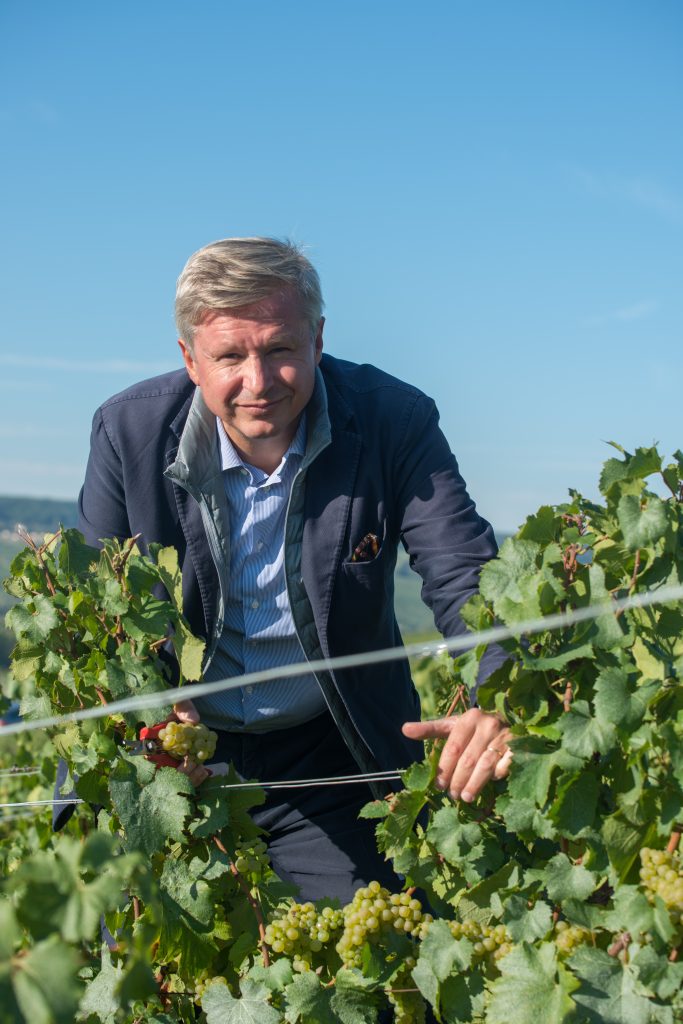
(photo Michael Boudot)
He changed direction having been greatly impressed by a 1961 Coteaux Champenois from Les Mesnil-San-Oger and specifically the lieut-dit of Volibarts. In this lieut-dit the vines are suffering from the court-noué virus. “They produce tiny bunches of very tasty berries, also high in acidity. I took advantage of this and used all the fruit from the virus infected vines and macerated them on skins for 2-3 hours and then adding them to the rest of the bunches.” The white was fermented and aged in limestone eggs, with twenty percent in new oak and twenty percent in stainless steel “for the flintiness it brings.”
“We have a very pure expression of Chardonnay. In the Chablis style, but specifically Champenois for its purity. There is very little white Coteaux Champenois and it has to establish an identity. Too many people are using a lot of new oak, trying to be Burgundian.”
“Every step we take is to move stylistically away from Burgundy. It is not interesting for us to make Burgundy.”
And how would he differentiate the styles? “Burgundy is larger, richer and more concentrated. There is more texture, particularly in the Côte de Nuits. We have to find complexity from somewhere else.”
It seems the special identity and complexity of Coteaux Champenois is linked its vibrancy. “Even if we have climate change and ripeness, we have wines that are full of energy. Our low pHs mean the wines react to things. (Typical pH for the whites is 3.1 and red 3.4). They are full of energy.” He seems concerned this character can sometimes be too extreme. “We want to domesticate them and make them more relaxed.”
“Now,’ says Lécaillon, “We can speak about Champagne terroir. This is not just good for communication, but for our understanding of our terroir, which is beneficial for the Champagne we make.”
This is just the beginning. There are plans for a collection of single vineyard wines. In 2008 a parcel in Dizy was planted on darker clay with a massale selection of Pinot Noir from Roederer’s own vineyards. “This will give a much darker fruit expression,” says Lécaillon, and in 2012 the first parcel of green clay was cultivated. And Roederer are also planting field blends of the seven historic and official varieties recognised in Champagne, which include Pinot Gris and Pinot Blanc. “We want to keep our biodiversity.” And as he points out, the varieties may prove useful as the climate is unpredictable. “They have been grown here for 400 years during which the climate has gone through many changes.”
In the climate change stakes it would appear the Champagne region is a winner. As Lécaillon remarks, “I can harvest when I want and it is always ripe and, with teh exertion of 2017, we have not had botrytis in 15 years.” But, it is not climate change alone which is responsible for improved ripeness and health. It is also that many producers are changing to organic practices and are decreasing their yields. “We have a new generation who are more artisanal in their approach and have a feeling for the land.”
“Now,” he says, “is the golden age of Champagne.”
It’s intriguing to taste wine from a single vineyard in Champagne which is not obscured by bubbles, autolysis and dosage. I was pleasantly surprised by the two cuvées. They are not wannabe Burgundy, with the exception of the pricing, which is very punchy.
Tasting Notes
As an expression of a singe vineyard, the white wine showed a translucency to chalky soil. I am not convinced the Pinot showcases the clay. It felt more like a wine from calcareous soil with its somewhat strict finish, straight palate and vibrancy. I would like to see more depth, intensity and complexity in both wines, but it’s early days. I find the wines lively, stylish and elegant.
Louis Roederer Hommage à Camille Coteaux Champenois Blanc 2018
Breezy aroma which is fresh, elegant and floral with a hint of lime leaf. Airy and delicate, it floats lightly on the palate, straight, lively and pure into a finish which has a light note of salinity. I like the crisp, tissue-paper finesses of this wine. As the wine evolved over 3 days it became more salty, chalky and focused. 2022-25 (Price approx £130)
Louis Roederer Hommage à Camille Coteaux Champenois Rouge 2018
Pure and fruity aroma with the freshness of cranberry. A crisp and energetic spring on the attack. Talcy tannins mid palate. The oak is apparent in the hints of smoky tobacco and liquorice. Bitter cherry tanginess combines with higher toned, elegant florals and lower toned earthy notes. It’s bright and vivacious with a slightly strict and snappy austerity at the end. Over three days it settled nicely into its fresh and crunchy character. From 2021-26 (Price Approx £155)
I have written about Roederer’s still wines for Club Oenologique. Follow the link to Club O’s website for articles by other writers on Champagne and Coteaux Champenois. https://cluboenologique.com/story/reviewed-louis-roederers-new-still-champagne-wines/
Stockists
Harrods, Hedonism, Selfridges and Fortnums. The Finest Bubble and other reputable indies.

